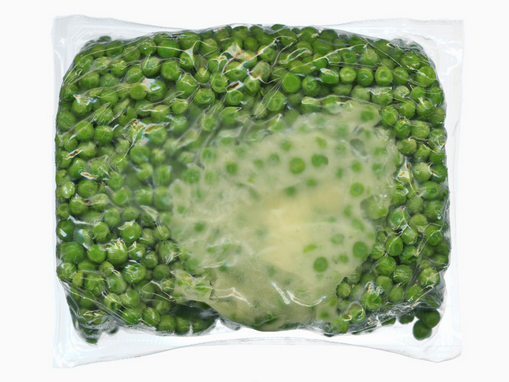This morning I woke up when Harlow started crying at around 6:30am. I picked her up out of her crib and changed her diaper in the hallway, because I didn't want to wake Mazzy by changing her in their room. Harlow was fussing and I knew the one thing I could do to calm her down. After her diaper was secured, I scooped her up and breastfed right there in the hallway on the floor.
I'm not producing nearly as much milk these days. I've got one boob that's doing the majority of the work and the other one is cheering from the sidelines. "You can do it, left boob! It's up to you to keep the baby alive! I'm rooting for you!"
We started supplementing with formula at about six months. Harlow doesn't seem to notice a difference. She drinks from a bottle all day while I'm at work anyway. Sometimes pumped milk, sometimes formula, sometimes a combination of both.
When I get home, Harlow often refuses my breast. Even the left one. I think the flow of milk isn't as fast as she would like. She's refused it so often, I've stopped trying. It used to upset me but I'm over it. Mazzy did the same thing at around her age. I think it's just one of the hazards of being a working mom.
So, in the evenings, even though my boobs are right there for the taking, I just feed her a bottle. Usually, Harlow is tired and doesn't drink the whole thing, so I always use formula for that feed. I don't want the good stuff to go to waste.
I used to pump four times a day. Once right before I left for work. Twice at work. And then once at night after Harlow went to bed. I'm not sure if I stopped pumping as often because I'm making less milk or I stopped making as much milk because I stopped pumping as often.
I do know that the whole pumping thing is getting pretty exhausting. As much as I kinda like taking a ten minue break from my work day to check Facebook and scroll through Instagram, if I have to clean that pump one more time I am going to scream.
Ironically, I think it was our vacation that slowed my milk production. I breastfed a lot more when I was around Harlow for the entire day. But that meant I pumped less which ultimately lessened my supply.
In any case, I'm down to one feed in the morning and two pumps per day. The bottles are laughably small. So small, I'm not even sure my milk is adding enough health benefits to continue.
But I breastfed Mazzy for a year and I am determined to do the same for Harlow.
Well, it's not all for Harlow. Part of me knows that the reason I've been able to go this long without exercising is because producing milk burns calories. Part of me also knows that the reason my boobs don't look like deflated pancakes waving at me from the floor, is because they've still got a bit of milk in them.
So, I keep up with my routine. But there is definitely a part of me wondering who I am doing this for.
That is, until those moments, when I'm feeding on the floor at 6am in the hallway with Harlow cradled in my arms. She doesn't lie like that for me in any other situation. And since sleep training, I no longer fall asleep with her in bed.
It's like breastfeeding helps me feel like I still have my little baby.
Last night I went out to dinner with a friend of mine who brought along her 6-week-old, held against her body in a sling. She seemed so tiny. So much smaller than the little girl I tote casually on one hip. The one who rides front facing in the stroller and can stand on her own two feet without holding on to anything.
Although, this past weekend, I went through my closet to get rid of clothes and free up some space. Without thinking, I separated the clothes into two piles. One for the clothes I no longer wear and one for my maternity clothes.
For some reason, I'm not ready to get rid of them. I put the maternity clothes in a bag back in my closet.
Just like I'm not ready to give away the clothes Harlow is quickly outgrowing. With Mazzy, I saved everything for our next kid. Giving away Harlow's clothes, never to be seen again, seems like a momumental decision.
I'm not ready to stop breastfeeding either. Even if I make only a few ounces of milk a day.
That moment in the morning, when Mike and Mazzy are both still sleeping and Harlow and I are tethered together in a way that only a mother and child can be...
That moment is mine. Ours.
Get To Class
Gettystock
Dr. Ann Borders, an OB-GYN who works with NorthShore University HealthSystem, recommends that her patients and their partners go to a breastfeeding class before Baby is born. In class, they don't just focus on why breastfeeding matters, but what you can actually expect in those daunting first few days. And Borders doesn't just recommend this for newbie families, but also moms who may have tried breastfeeding before and found it difficult."You're not going to know everything from taking the class, but it gives you a groundwork that you can build on at the hospital once you have the nurses helping you," Borders said.Most OB-GYNs will be able to give you a referral to a breastfeeding class nearby, but if for some reason yours doesn't have any suggestions, a quick online search should bring up options in your area.
Don't Leave Until You Get Help
Getty
When you're in the hospital or birthing center, or while you've still got your midwife with you after a home birth, make sure you speak up and ask for help getting started."Every health care person should know the basic mechanics of breastfeeding," said Mary Ryngaert, a board certified lactation consultant with the University of Florida's Center for Breastfeeding and Newborns. "I joke that the person who empties the trash [in labor and delivery] should be able to help someone latch on."Even Borders, whose professional life and research centers around breastfeeding, said that when her first baby was born, she had to ask for guidance. Women should feel 100 percent empowered to ask their care provider to help them start breastfeeding within the first hour after a vaginal birth or two hours after a C-section if the circumstances allow for it, she said. Don't leave the hospital until you've gotten the help you need.
When In Doubt, Think Skin-To-Skin
Getty
There's a reason why hospitals hoping to earn the coveted
"baby friendly" designation for breastfeeding support stress the importance of skin-to-skin: It works. Research shows that essential contact helps relax both the mom and baby, stimulates feeding behaviors and triggers the release of certain hormones that spur breastfeeding. Experts say it's important to do it both early -- ideally right after birth -- and often."Keeping the baby skin-to-skin as much as possible in the early days after birth is very important," Ryngaert said. "If the mother is 'touched out,' then the partner can hold the baby skin-to-skin. It still helps the baby move instinctually to what [he or she] is supposed to do."If you're not in a "baby friendly" hospital with policies in place to promote skin-to-skin, don't be discouraged. Tell your doctors and nurses that it's important to you, Borders said. As long as your baby is stable, there's no reason why they shouldn't let you hold him or her close.
Be Prepared For Engorgement
Getty
Engorgement, or a feeling of heavy fullness in the breasts that can be very painful, is common several days after delivery, but Borders said a lot of women don't know to expect it because no one talks to them about it. Having a game plan in place can help curb the pain and keep women from throwing in the towel when they're sore and freaked out.She suggests an over-the-counter pain medication, like Motrin, and ice. Two bags of frozen peas can also work, Borders said, and -- bonus! -- they tend to fit nicely into nursing bras. Some women may also want to take a hot shower to express some of their milk.
Lean Back And Put Your Feet Up!
Getty
Susan Burger, president of the New York Lactation Consultant Association, finds few things as irksome as telling women that they need to try specific holds. Moms hear those tips and get "all twisted up with finding the perfect position," she said.What matters most in her book is that breastfeeding mothers get comfortable, which often means leaning back a bit and putting their feet up. "If she's comfortable, it's so much easier to get the baby into a comfortable position," Burger explained. This is one area where partners can really step in, looking at moms to spot any ways in which they might be uncomfortable, then helping by giving them a pillow, a shoulder rub ... whatever.
Ask Your Partner To Sit With You
Getty
Your partner, or your mom or friend can also help by agreeing to sit with you while you breastfeed. Why? Since moms are often extremely relaxed and drowsy while they're breast-feeding, your partner can agree to be on "alert" -- maybe quietly reading a book or checking e-mails -- while you get some sleep. "Invite her to take a cat nap while breast-feeding," Ryngaert said. It may sound like a simple trick, but Ryngaert said it's such an easy, often-overlooked way for women to fully relax while breast-feeding, which only increases bonding and enjoyment, and also, possibly, catch up on some much-needed sleep.
Tilt Back, Open Wide
Getty
Drop your mouth down to your chest, then open your mouth. A bit tricky, no? Now tilt your head back slightly and open it again. See how much easier that is? Burger said that one of the biggest ways to help babies drink is to make sure their heads are tilted back a bit. You can help support them in that position by putting a forearm under the baby's neck, or even a rolled-up receiving blanket."There are a lot of different ways to achieve it," she said.
Think Close, Close, Close
Getty
While experts may not poo-poo specific holds, at least ones a professional hasn't personally recommended for you and your baby, they do offer broader positioning advice: "I like to see the baby and mother have almost no space between them," Ryngaert said."You're not just putting your breast in their mouth, you're really bringing your bodies together," she said. That helps babies bring a big, wide open mouth to the breast, giving them the deep attachment that they need. If you're not sure what that means, a good first place to look is the internet: There are videos online that demonstrate the concept, Ryngaert said, and places like
La Leche League have helpful illustrations as well.
Pump In Short, Frequent Bursts
Getty
Burger said that one of the mistakes women can make is to focus too much on duration and not enough on the frequency of pumping. Often they're too hard on themselves, sitting there for long stretches and pumping away in an attempt to produce more milk, when really, they'd be better served by just a few minutes here and there throughout the day.Burger likened it to training for a marathon: "You wouldn't just go out and run 13 miles," she said. "If you're just starting out, you'd try a mile or two and do that three or four times a week. That's a much better approach." In the same vein, if you can work it into your schedule, frequent, brief bouts of pumping help build milk supply better than sitting there, rather helplessly, and pumping for one long stretch.
Don't Just Deal With Sore Nipples
Getty
Borders said that women shouldn't just write off sore nipples -- which can sometimes become so bad they don't want to breast-feed at all. She recommends something called Newman's all-purpose ointment, which your pharmacist can mix for you. For women who don't have thrush (a generally harmless yeast infection)
La Leche League also recommends applying freshly expressed breast milk to your nipples, which can help them heal. The bottom line? If your nipples hurt, don't just accept it. Talk to your doctor about what might be causing it and what you can do.
Know When To Call
Getty
"Make sure you leave the hospital with the number for someone you can call with questions," Borders said. Many pediatricians offices now have lactation consultants on staff, which makes it easier for women to find someone who can offer guidance when you're they're in for one of those many new baby visits that happen after birth.In many cases, lactation consultants are covered by insurance, Ryngaert said, but places like La Leche League also have
a call system where you can speak to someone for free. Many nurses and pediatricians are also board certified lactation consultants, which can help with insurance coverage. Women shouldn't feel pressure to figure everything out in the first week, Ryngaert said. "If a baby needs to go on formula for a time while the mother's milk supply is being established, that doesn't mean the baby's not going to be breastfed," she added. "I've seen babies that didn't latch on until eight weeks."But new moms should never, ever hesitate to ask for help."If a mother is having more than a little tenderness, she should not just tough it out. She should get some help" Burger said. "And if that person says, 'Oh, it's normal, suck it up,' that's not a good person to get help from, and they should see someone else."
Support HuffPost
Our 2024 Coverage Needs You
Your Loyalty Means The World To Us
At HuffPost, we believe that everyone needs high-quality journalism, but we understand that not everyone can afford to pay for expensive news subscriptions. That is why we are committed to providing deeply reported, carefully fact-checked news that is freely accessible to everyone.
Whether you come to HuffPost for updates on the 2024 presidential race, hard-hitting investigations into critical issues facing our country today, or trending stories that make you laugh, we appreciate you. The truth is, news costs money to produce, and we are proud that we have never put our stories behind an expensive paywall.
Would you join us to help keep our stories free for all? Your contribution of as little as $2 will go a long way.
Can't afford to donate? Support HuffPost by creating a free account and log in while you read.
As Americans head to the polls in 2024, the very future of our country is at stake. At HuffPost, we believe that a free press is critical to creating well-informed voters. That's why our journalism is free for everyone, even though other newsrooms retreat behind expensive paywalls.
Our journalists will continue to cover the twists and turns during this historic presidential election. With your help, we'll bring you hard-hitting investigations, well-researched analysis and timely takes you can't find elsewhere. Reporting in this current political climate is a responsibility we do not take lightly, and we thank you for your support.
Contribute as little as $2 to keep our news free for all.
Can't afford to donate? Support HuffPost by creating a free account and log in while you read.
Dear HuffPost Reader
Thank you for your past contribution to HuffPost. We are sincerely grateful for readers like you who help us ensure that we can keep our journalism free for everyone.
The stakes are high this year, and our 2024 coverage could use continued support. Would you consider becoming a regular HuffPost contributor?
Dear HuffPost Reader
Thank you for your past contribution to HuffPost. We are sincerely grateful for readers like you who help us ensure that we can keep our journalism free for everyone.
The stakes are high this year, and our 2024 coverage could use continued support. If circumstances have changed since you last contributed, we hope you’ll consider contributing to HuffPost once more.
Already contributed? Log in to hide these messages.










